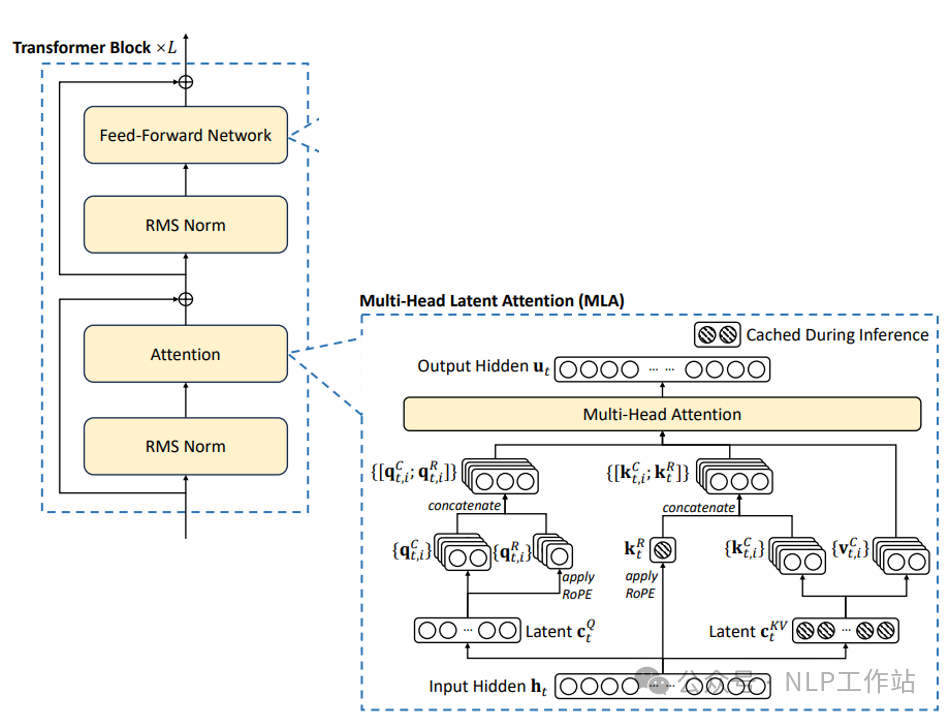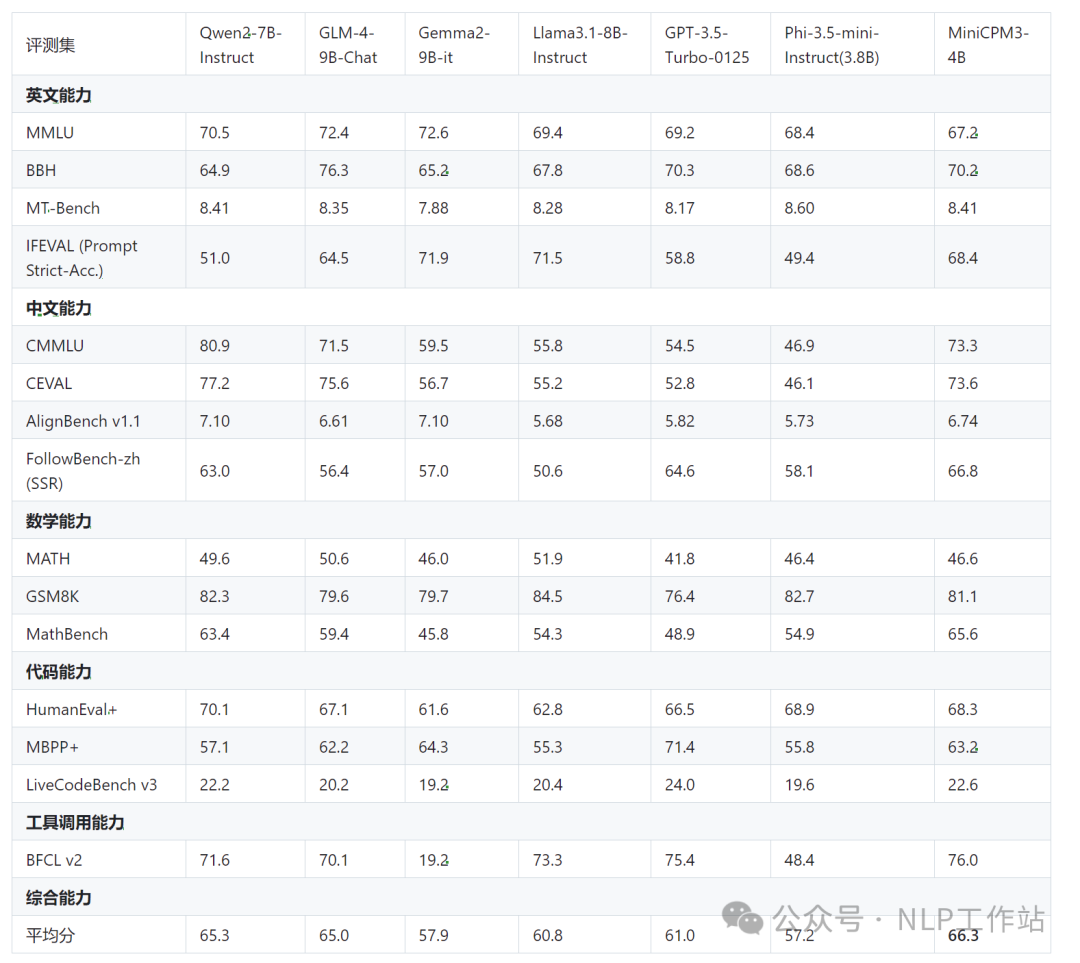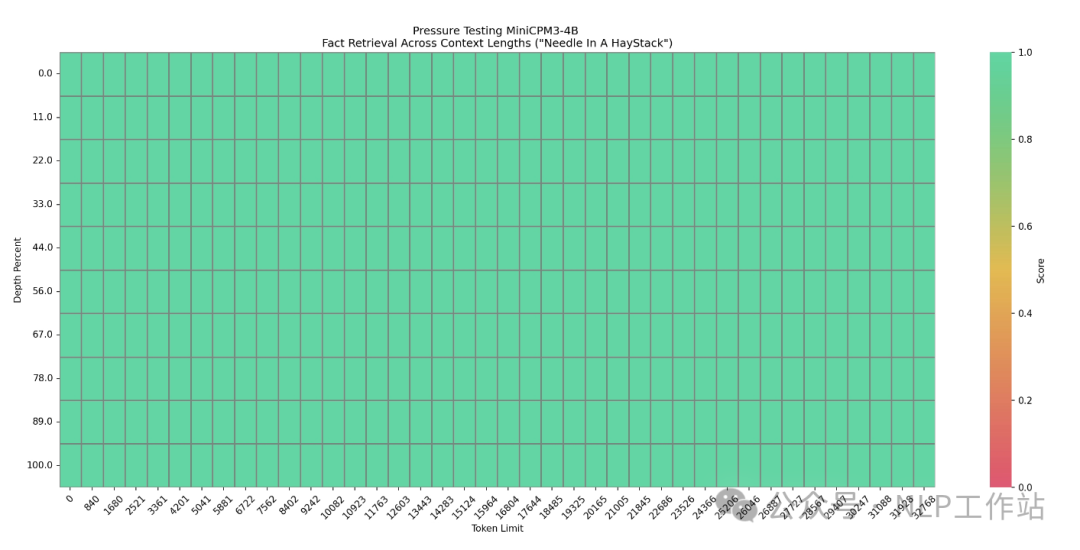将端侧大模型进行到底-MiniCPM3-4B开源
面壁一直都在做端侧大模型,之前有文本系列MiniCPM-2B模型,还有多模态系列的MiniCPM-V系列模型,今天又开源了MiniCPM3-4B模型,真是端侧一路走到低。
这次MiniCPM3-4B也是在效果上有了巨大的提升,超过Phi-3.5-mini-Instruct模型,肩比Llama3.1-8B-Instruct、GLM-4-9B-Chat、Qwen2-7B-Instruct等一众模型,堪称小模型之王。
之前的MiniCPM-2B模型报告也是干活满满,详见:https://shengdinghu.notion.site/MiniCPM-c805a17c5c8046398914e47f0542095a
这里说一下哈,MiniCPM-2B是1.0版本模型,MiniCPM-1B是2.0版本模型,现在是3.0版本4B。
模型改进
下面是3个版本的模型结构(1->2->3)的区别:
- 位置编码:RoPE->RoPE->RoPE
注意力机制:MHA->GQA->MLA,MLA也是DeepSeek-V2的核心创新

- 词表大小:123K->73K->73K
- 模型层数:40->52->62
- 隐藏层节点:2304->1536->2560
- 最大长度:4k->4K->32k
- 系统提示词:不支持->不支持->支持
- 工具调用和代码解释器:不支持->不支持->支持
同时,还发布了RAG套件MiniCPM-Embedding模型和MiniCPM-Reranker模型,针对 RAG场景还发布了微调版MiniCPM3-RAG-LoRA模型。
模型效果
MiniCPM3-4B模型在中文英文遵循、数据推理、代码能力、工具调用上表现均很不错的效果。

其中,工具调用能力尤为突出,在Berkeley Function Calling Leaderboard上优于Llama3.1-8B-Instruct、GLM-4-9B-Chat、Qwen2-7B-Instruct等更大模型。

长文档的大海捞针也是全绿。

模型快速使用
PS:模型下载有困难的同学,详见我之前写的一篇文章《大模型下载使我痛苦》。
本文转载自 NLP工作站,作者: 刘聪NLP

















